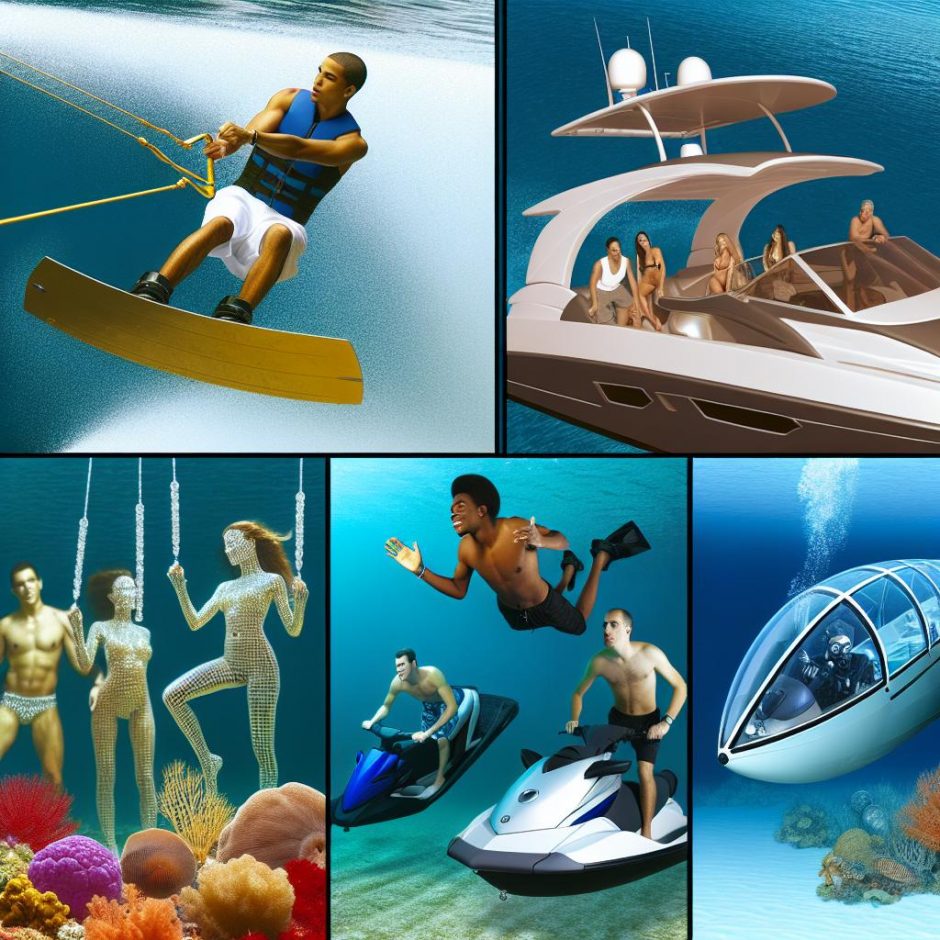The Most Expensive Water Sports to Try
Water sports present an opportunity to combine the adrenaline of physical activity with the serene beauty of aquatic environments. However, participating in some of these activities can require a significant financial investment. This is often due to specialized equipment needs, professional training or guidance, and specific environmental requirements, which altogether contribute to the costs. Below, we delve into a few water sports that are considered among the most expensive, examining the various factors that contribute to their status.
Yacht Racing
Yacht racing is highly regarded not only for its competitive nature but also for its lavish aspects. The sport requires a substantial monetary commitment right from the onset. The primary expense involves the acquisition or chartering of a yacht. While it is possible to rent, owning a yacht often implies a considerable investment in itself. Chartering can also add up, especially during peak seasons or prestigious races.
Beyond the vessel, crew employment adds to the expense. A skilled crew ensures efficient operation and competitive performance during races. Salaries, accommodation, and sustenance for the crew are ongoing costs participants must account for. Routine maintenance and repair costs to keep the yacht in optimal condition further add to the financial demands. This includes hull inspections, sail replacements, engine repairs, and more.
Docking fees are incurred at marinas or ports where the yacht is stationed and vary depending on location and yacht size. Racing events themselves often have entry fees, which can be substantial, especially for internationally recognized competitions like the America’s Cup. These structural fees, paired with travel and accommodation for race events, craft yacht racing into one of the premier yet costly water sports.
Scuba Diving
Scuba diving introduces enthusiasts to the captivating world beneath the water’s surface. While basic scuba diving lessons could be moderately priced, engaging in full certification programs results in higher expenditures. Courses for advanced certification, such as Rescue Diver or Divemaster, feature extensive training regimens and tests.
Central to scuba diving is the necessity for specialized gear. This includes items such as tanks, regulators, wetsuits, dive computers, masks, fins, and buoyancy compensators. Although some facilities offer rentals, owning personal gear ensures proper fit and reliability. High-quality dive equipment can quickly elevate the initial expenditure.
Furthermore, scuba diving is often synonymous with exploration of exotic, remote diving locales. From the Great Barrier Reef’s extensive coral systems to the vibrant marine life in the Galapagos Islands, such destinations are prime choices. Travel expenses, including flights, accommodations, and dive passes, therefore make up a substantial portion of diving costs. Enthusiasts seeking to dive in renowned sites often commit to these supplemental expenses as part of their adventuring.
Jet Surfing
Jet surfing is increasingly favored for its combination of the excitement of surfing and the thrill of speed. It requires the use of a motor-powered surfboard, which represents a significant upfront expenditure. The boards, designed with advanced engineering, can cost several thousands of dollars.
Fuel costs, an ongoing expense, depend on frequency and duration of use. Also, like any motorized vehicle, jet surfing boards require periodic maintenance. Repairs, part replacements, and tune-ups ensure safe and effective performance. Enthusiasts must also contemplate protective gear purchases, such as helmets and flotation vests, adding layers of safety with additional cost.
For those looking to test different models and features, suppliers like JetSurf offer variety and expertise, boosting the boarding experience with tailored features for specific riding styles.
Flyboarding
Emerging as a fascinating fusion of extreme sports and technology, flyboarding holds unique appeal for aquatics aficionados. The central apparatus, a jet-powered board that elevates riders above water, incites high initial costs. A flyboarding setup necessitates a compatible personal watercraft (PWC) to power the jet device, with customization requirements augmenting expenses.
After acquiring equipment, participants typically undergo training sessions to grasp operation and ensure safety, incurring further costs. Safety gear such as helmets and life vests represent additional expenditure, imperative for accident prevention.
Enthusiasts target flyboard sessions over clear, calm waters, which means travel to specific locations or events further elevates costs. For those interested in staying updated or purchasing gear, the Flyboard website provides resources and avenues for engagement with the sport.
Kiteboarding
The dynamic sport of kiteboarding combines aspects of athletics and adventure. It requires significant financial outlay due to essential gear requirements. This typically comprises a kite, board, harness, control bar, and safety devices. Although initial lessons through certified instructors might be deemed an additional cost, they are an inherent aspect due to the complexities of maneuvering both kite and board safely and effectively. Therefore, instruction becomes an important factor before immersion into the sport.
While some gear can be rented initially, regular practitioners often choose to invest in their own equipment for consistency and aesthetics. Like other water sports, kiteboarding frequently takes place in prime coastal areas suited for the activity, necessitating travel expenditures.
The International Kiteboarding Organization is a resource for further exploration and skill development. It also serves to connect the kiteboarding community, sharing insights into best practices for enthusiasts seeking experiential value despite financial considerations.
Conclusion
Engaging in these costly yet captivating water sports requires careful consideration of each component contributing to their overall expense. Access to the requisite equipment, appropriate training, and traveling to select locations embraces a financial commitment not suited for every enthusiast. However, many participants find value in the unique experiences and inherent joys these activities hold. For those keen on embarking on such adventures, it is crucial to engage in thorough research and budgeting to responsibly enjoy all facets of these thrilling sports.

